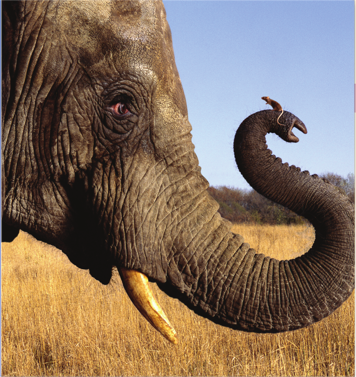Chapter 6 Powers and Roots

We next turn our attention to a large and useful family of functions, called power functions. Here is an example of a power function with fractional exponents.
In 1932, Max Kleiber published a remarkable equation for the metabolic rate of an animal as a function of its mass. The table at right shows the mass of various animals in kilograms and their metabolic rates, in kilocalories per day. A plot of the data, resulting in the famous “mouse-to-elephant” curve, is shown in the figure.
| Animal | Mass (kg) | Metabolic rate (kcal/day) |
| Mouse | \(0.02\) | \(3.4\) |
| Rat | \(0.2\) | \(28\) |
| Guinea pig | \(0.8\) | \(48\) |
| Cat | \(3.0\) | \(150\) |
| Rabbit | \(3.5\) | \(165\) |
| Dog | \(15.5\) | \(520\) |
| Chimpanzee | \(38\) | \(1110\) |
| Sheep | \(50\) | \(1300\) |
| Human | \(65\) | \(1660\) |
| Pig | \(250\) | \(4350\) |
| Cow | \(400\) | \(6080\) |
| Polar bear | \(600\) | \(8340\) |
| Elephant | \(3670\) | \(48,800\) |

Kleiber modeled his data by the power function
\begin{equation*}
P(m) = 73.3m^{0.74}
\end{equation*}
where \(P\) is the metabolic rate and \(m\) is the mass of the animal. Kleiber’s rule initiated the use of allometric equations, or power functions of mass, in physiology.

